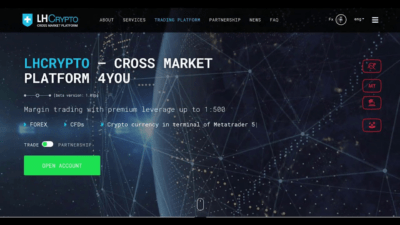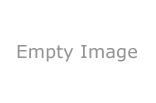Videos de Sexo > Forex Trading > Ichimoku Cloud Ichimoku Kinko Hyo Indicator & Strategies
Descricao do video:
Contents
The Kumo cloud twist happens when the Leading Span A and Leading Span B cross. When Leading Span A crosses above Leading Span B that’s a bullish reversal signal and when Leading Span A crosses below Leading Span B that’s considered to be a bearish reversal signal. See signals occur when a candlestick from above the Kumo cloud breaks and closes below the Leading span A.

First, the trend was down as the stock was trading below the cloud and the cloud was red. After a sideways bounce in August, the Conversion Line moved above the Base Line to enable the setup. This did not last long as the Conversion Line moved back below the Base Line to trigger a bearish signal on September 15th. The most characteristic feature of the Ichimoku Kinko Hyo indicator is the cloud . It is comprised of two lines, the Senkou Span A and the Senkou Span B . Therefore, trends are identified by determining whether prices are trading above or below the the cloud.
In a market like FX that trades almost 24 hours a day and has only an arbitrary open and close, this version of the midpoint is appropriate and useful. Chikou Span – The range of Chikou, LegacyFX Broker Review or range of lagging, is the closing price of the current period plotted 26 days back on the chart. This line is used to indicate the possibility of support and resistance areas.
From beginners to experts, all traders need to know a wide range of technical terms. Similarly, when the price is falling, you should watch out for the baseline. If it crosses it, it is a signal that a reversal is about to happen and that you should start to exit.
In general, the thicker and more well-developed a Kumo is, the greater the support/resistance it will provide. USD/CAD, where price respected the Ichimoku Kinko Hyo Cloud boundaries on five separate occasions over a 30-day span. While it is possible to trade off the Senkou span A and B lines on their own, their real power comes in their combined dynamics in the Kumo. Thus provides us with all the information the Tenkan Sen does, just in a longer time frame.
Shorter timeframes generate too much noise and provide less reliability and more opportunities for fake signals. You may also want to do mutli-timeframe analysis, which will help you get to grips with the Ichimoku technique. For instance, we can watch the 4-hour chart, take actions on the 15 minute or 5 minute chart; if the 40hour chart leans bullish, we can look for buy signals on the lower timeframes and take these entries. Therefore, we use the lagging line to find a support level, indicated on the chart with the yellow ray. We buy BTC-USD when the price touches this level, which it does after 12 hours or so.
The Chikou span is unconventional in that it time-shifts the current price to compare with the historical price action. If the Chikou span is above the previous price action, then this is bullish. Whereas if the Chikou span is below the previous price action then this points to more bearish action to come. If the price is above the Kumo, then we have an uptrend whereas if the price is below the Kumo we have a downward trend. For example, the chart below shows the 4-hour price action for BTC-USD along with the Ichimoku cloud/Kumo. In this instance, we see that BTC-USD breaks above the Ichimoku cloud during July 12, 2016, which is also known as a ‘Kumo breakout’.
The content herewith is generic and does not take into consideration individual personal circumstances, investment experience or current financial situation. The information presented herein is prepared by CAPEX.com and does not intend to constitute Investment Advice. Trailing stop-loss” of sorts and enables the trader to keep a tight hold on risk management. Senkou Span B line also moves on periods forward and produces a so-called slow border of Ishimoku cloud.
Thus, a simple look at an Ichimoku chart should provide the Ichimoku practitioner with a nearly immediate understanding of the sentiment, momentum, and strength of the trend. This is illustrated in the chart below which shows that the conversion line gives a tighter level of support and resistance and a more accurate depiction of price equilibrium. Also, notice that when the conversion line is flat, the price action is attracted to it and we experience the ‘rubber band’ effect. The price rotates around this equilibrium level swinging away then back towards the Kijun Sen. Therefore, we can buy/sell if the price is significantly lower/higher than a flat conversion line. The third component is the Kijun Sen or ‘conversion’ line which is the highest high and lowest low averaged over the previous 26 periods. The Kijun Sen essentially works in the same way as the Tenkan Sen but since it covers a longer time period, it is more accurate at determining momentum and support/resistance.
Analyze Trends with the Ichimoku Cloud
The essence is to use specific ways of calculating and displaying moving averages to derive a comprehensive understanding of the price action. You cannot do that with standard moving averages and not with just one or two — you need fancier versions and unconventional display. It is a curiosity that the Ichimoku moving average numbers, 9 and 26, are the same as devised independently by Gerald Appel in the MACD methodology. It would be nice to have a valid translation or at least some words that would give us an intuitive grasp.

Second, you need to test the various periods to see the one that works for you. Finally, it is recommended that you combine the Can I Trust UFX indicator with other indicators. It is calculated by adding the highest high and highest low in the past 52 days divided by 2.
Senkou span B
A fat cloud indicates big prices changes over the time period included, while a skimpy cloud implies a more easily broken support or resistance. A fat cloud gives you confidence that the price will not break support or resistance. A skimpy cloud might break and here is where conventional candlestick analysis comes in handy — you examine the candlesticks breaking into the cloud to see if they are continuation or reversal candlesticks. A reversal candlestick like a shooting star would alert you that the move is ending.

But if you are using the 1H timeframe and above, you will need a lot of patience and don’t enter trades blindly or rush into it. So, after the crossover, we buy at the opening of the next candle. Step #3 Buy after the crossover at the opening of FX Glory Forex Broker Introduction the next candle. When the price is in the middle of the cloud the trend is consolidating or ranging. 10 Step #3 Buy after the crossover at the opening of the next candle. Experience a new level of trading with the right support when you need it.
The default calculation setting is 52 periods but you can adjust it. This value is plotted 26 periods in the future and forms the slower Cloud boundary. The cloud is built to highlight support and resistance levels. It highlights several layers deep because support and resistance is not a single line drawn in the sand. Swing trading with Ichimoku Cloud works extremely well if you use the Kumo twist trade signal.
Kijun Sen or ‘Conversion’ line
The Ichimoku system is a Japanese charting method and a technical analysis method. Our team at Trading Strategy Guides mastered the method over a long period of time. Ichimoku Kinko Hyo is a Japanese charting technique developed before World War II. Its goal is to portray at a glance where the price is heading and when will be the right time to enter or exit the market.
Lastly, if the Chikou Span or the green line crosses the price in the bottom-up direction, that’s a buy signal. On a daily chart, this line is the mid-point of the 26-day high-low range, which is almost one month). On a daily chart, this line is the mid-point of the 9-day high-low range, which is almost two weeks. It’s very well explained but I have a small doubt about which timeframe data is best to use for this strategy like Seconds data or Hourly data or Daily data. I implementing this strategy on Hourly data but do I need to take seconds data for this Step #3 Buy after the crossover at the opening of the next candle.
- And most of all, we find that one of the Ichimoku indicators has an accuracy rate of over 75% .
- Because the Chikou Span cross is essentially the “chikou span confirmation” that savvy Ichimoku traders utilize to confirm chart sentiment before entering any trade.
- The Ichimoku trader only sees price trading in the middle of the Ichimoku Kinko Hyo Cloud, which he knows is a trendless area that makes for uncertain conditions.
CFDs are complex instruments and come with a high risk of losing money rapidly due to leverage. 71.31% of retail investor accounts lose money when trading CFDs with this provider. You should consider whether you understand how CFDs work and whether you can afford to take the high risk of losing your money. You should consider whether you understand how CFDs work and whether you can afford to take the risk of losing your money.
After testing this support, we see that the upward trend continues. To exit this trade, we would also use the lagging line to determine a resistance area where the upward trend may exhaust itself. So we have looked at the signals the Kumo gives for identifying the start of a trend but it also gives a multi-dimensional view of support and resistance, as mentioned earlier. If the price is higher than this indicator, the prices will probably continue to increase. When the price traverses this line the further trend changing is possible. Signal to buy is generated when the Tenkan-sen line traverses the Kijun-sen in the bottom-up direction.
A Better Measure of Support and Resistance
In case you funded the account via various methods, withdraw your profit via the same methods in the ratio according to the deposited sums. Every forex trader constantly searches for the answer for this question…. Also known as the ‘Ichimoku Kinko Hyo’ indicator, which translates into a “one look equilibrium chart”, Ichimoku may look complicated, but is easy to use. DTTW™ is proud to be the lead sponsor of TraderTV.LIVE™, the fastest-growing day trading channel on YouTube. If the price is above or below the cloud as shown above, it is usually a sign that the trend will continue. It is calculated by adding the period high and period low and dividing it by two.
As you will see upon studying an Ichimoku chart, the Kumo’s depth or thickness can vary drastically. The depth of the Kumo is an indication of market volatility, with a thicker Kumo indicating higher historical volatility and a thinner one indicating lower volatility. To understand this phenomenon, we need to keep in mind what the two lines that make up the Kumo, the Senkou span A and the Senkou span B, represent. The Senkou span A measures the average of the Tenkan Sen and Kijun Sen, so its “period” is between 9 and 26 periods since those are the two periods that the Tenkan Sen and Kijun Sen measure, respectively. The Senkou span B line, on the other hand, measures the average of the highest high and lowest low price for the past 52 periods. Thus, the Senkou Span A is essentially the “faster” line of the two, since it measures a shorter period of equilibrium.
Titulo: Ichimoku Cloud Ichimoku Kinko Hyo Indicator & Strategies
Duracao: 0:00
Categoria: Forex Trading


